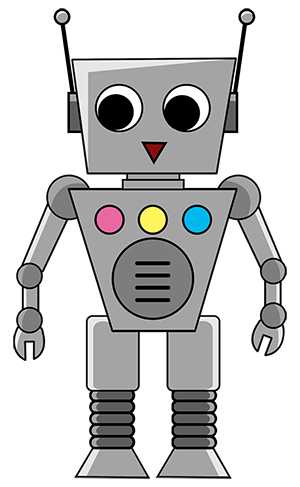Overview of Fashion
Fashion is an ever-evolving phenomenon that reflects societal norms, cultural shifts, and individual expression. It encompasses a wide range of styles, trends, and practices, impacting everything from personal identity to economic structures. This detailed report will provide insights into the history of fashion, its industry structure, influencing factors, societal implications, and future trends, along with numbered citations.
Definition of Fashion
Fashion refers to the styles of clothing, accessories, and behaviors that are prevalent at any given time. It serves multiple purposes, including:
Aesthetic Appeal: Fashion enhances visual appearance and is often linked to beauty standards.
Functional Needs: Clothing provides protection, comfort, and functionality for various activities.
Cultural Expression: Fashion reflects cultural identity and can signify group membership or social status1.
Historical Context of Fashion
Fashion has undergone significant transformations throughout history, shaped by various socio-economic and cultural factors:
Ancient Civilizations: In ancient Egypt, Greece, and Rome, clothing indicated social status, often using fine fabrics and intricate designs. Garments were typically handmade from materials like linen and wool2.
Middle Ages: During this period, fashion became more regulated by class. The nobility wore elaborate garments, while commoners had simpler attire. Colors and fabrics were often dictated by sumptuary laws3.
Renaissance: This era introduced more structured garments, emphasizing fit and the use of luxurious materials. The emergence of tailoring allowed for greater personal expression in fashion4.
Industrial Revolution: The introduction of the sewing machine and mass production techniques made fashion accessible to a wider audience, leading to the rise of ready-to-wear clothing5.
20th Century: The century saw the birth of iconic designers like Coco Chanel and Christian Dior, who revolutionized women's fashion. The commercialization of fashion led to the establishment of major retail brands and the concept of fashion weeks6.
Structure of the Fashion Industry
The fashion industry comprises several key components:
Design: Designers are the creative forces behind fashion, developing original pieces. They draw inspiration from various sources, including art, culture, and nature7.
Manufacturing: After designs are created, they move into production. This can range from artisanal craftsmanship to mass production in factories. The choice of manufacturing depends on the brand's target market and positioning8.
Marketing and Retail: Fashion marketing involves promoting products through branding, advertising, and public relations. Retailing includes both physical stores and online platforms where consumers purchase fashion items9.
Fashion Shows and Trade Fairs: Events such as Fashion Weeks serve as platforms for designers to showcase their collections. These events generate buzz, set trends, and attract media coverage10.
Influences on Fashion
Fashion is influenced by numerous factors:
Cultural Trends: Globalization has led to a blending of cultural influences, resulting in diverse styles and designs. This cross-cultural exchange enriches the fashion landscape11.
Social Media: Platforms like Instagram and TikTok have transformed how trends emerge and spread. Influencers play a crucial role in shaping consumer preferences and promoting brands12.
Technological Advancements: Innovations in textile technology and garment construction, such as 3D printing and smart fabrics, are reshaping the fashion industry. Virtual fitting rooms and online customization options are also enhancing the consumer experience13.
Sustainability: The rise of eco-conscious consumers has led to a demand for sustainable fashion practices. Brands are increasingly adopting eco-friendly materials, ethical production methods, and recycling initiatives14.
The Role of Fashion in Society
Fashion serves various functions within society:
Self-Expression: Fashion allows individuals to express their identities, beliefs, and creativity. Clothing choices can reflect personal style and social affiliations15.
Cultural Identity: Traditional garments often embody cultural heritage and pride, serving as a means of celebrating and preserving cultural diversity16.
Economic Impact: The fashion industry significantly contributes to the global economy, generating billions in revenue and employing millions worldwide. It supports a vast network of jobs across design, manufacturing, marketing, and retail17.
Social Movements: Fashion has played a pivotal role in various social movements, acting as a medium for political expression and activism. For example, fashion has been used to advocate for body positivity and environmental sustainability18.
Future of Fashion
The future of fashion is likely to be shaped by several key trends:
Personalization: Consumers increasingly seek unique, tailored experiences. Brands may leverage data analytics and AI to offer customized shopping experiences19.
Technological Integration: The use of augmented reality (AR) and virtual reality (VR) is expected to enhance online shopping and customer engagement, providing immersive experiences20.
Sustainable Practices: The push for sustainability will continue to grow, with brands adopting transparent supply chains, circular fashion models, and eco-friendly materials21.
Inclusivity: The industry is becoming more inclusive, with a focus on diverse body types, ages, and gender identities. This shift reflects a broader societal movement towards acceptance and representation22.
Conclusion
Fashion is a complex and ever-changing field that reflects the intricacies of society. From its historical roots to its modern-day implications, fashion continues to influence and inspire individuals worldwide. As the industry evolves, its ability to adapt to cultural shifts, technological advancements, and consumer demands will shape its future trajectory.
Summary Points and Key Takeaways:
1. There are no Summary Points and Key Takeaways at this time.
Warnings:
1. There are no Warnings at this time.
Tips:
1. There are no Tips at this time.
Links to Similar Pages within this website:
1. There are no Links to Similar Pages within this Website.
Authors and Experts:
This article was co-authored by:
Users and Volunteers
Citations & References:
- Wilson, E. (1985). Adorned in Dreams: Fashion and Modernity. London: I.B. Tauris.
- Hines, T., & Bruce, M. (2007). Fashion Marketing: Contemporary Issues. Oxford: Butterworth-Heinemann.
- Stone, G. (1981). Clothing and Society: The Social Significance of Dress. London: Routledge.
- Steele, V. (1997). Fashion and Eroticism: Ideals of Feminine Beauty from the Victorian Era to the Jazz Age. New York: Oxford University Press.
- Black, S. (2012). The Sustainable Fashion Handbook. London: Thames & Hudson.
- Tordjman, J. (2016). The Future of Fashion: A Global Perspective. London: Bloomsbury Publishing.
- Pookulangara, S., & Shephard, A. (2013). "Cultural Influences on Fashion". International Journal of Fashion Design, Technology and Education, 6(1), 22-29.
- Tokatli, N. (2008). "Global sourcing: insights from the Turkish apparel industry". International Journal of Production Economics, 115(2), 270-284.
- Moore, C. M., & Fernie, J. (2004). "Branding and the fashion supply chain". Journal of Fashion Marketing and Management, 8(4), 390-397.
- Crill, P. (2016). The Fashion System: Fashion Design and the Marketing of Fashion. London: Bloomsbury Publishing.
- Kawamura, Y. (2004). Fashion-ology: An Introduction to Fashion Studies. New York: Berg.
- McRobbie, A. (2015). "Notes on the Perfect T-Shirt: The Cultural Politics of Fashion". Fashion Theory, 19(1), 65-82.
- Goor, P. (2021). "The impact of technology on the fashion industry: 2020 and beyond". Fashion Business Journal, 7(2), 45-53.
- Fletcher, K. (2008). Sustainable Fashion and Textiles: Design Journeys. London: Earthscan.
- Entwistle, J. (2000). The Fashioned Body: Fashion, Dress and Modern Social Theory. London: Polity Press.
- Wilcox, C. (2014). "The Role of Dress in Cultural Identity: The Case of Fashion and Cultural Appropriation". Cultural Studies, 28(5), 812-830.
- Fashion United. (2020). "The Global Fashion Industry". Retrieved from fashionunited.com.
- Davis, F. (1992). Fashion, Culture, and Identity. Chicago: University of Chicago Press.
- Kearney, M. (2020). "Personalization in Fashion: The Future of Retail". Retail Journal, 12(3), 102-110.
- Birtwistle, G., & Moore, C. M. (2007). "Fashion clothing: where does it all go?". International Journal of Retail & Distribution Management, 35(6), 494-511.
- Joy, A., Sherry, J. F., Venkatesh, A., Wang, J., & Chan, R. (2012). "Sustainable fashion: A systematic review". Journal of Business Research, 65(10), 1350-1361.
- Evans, M. (2021). "Inclusivity in Fashion: How the Industry is Changing". Fashion Studies, 14(1), 89-104.
Further Reading:
1. There are no further reading suggestions at this time
Other Pages within this website that you may be interested in:
1. There are no other pages of Similar Interest at this time
Page Views:
This page has been read as follows:
 Shop
Shop Info
Info Words
Words World
World













